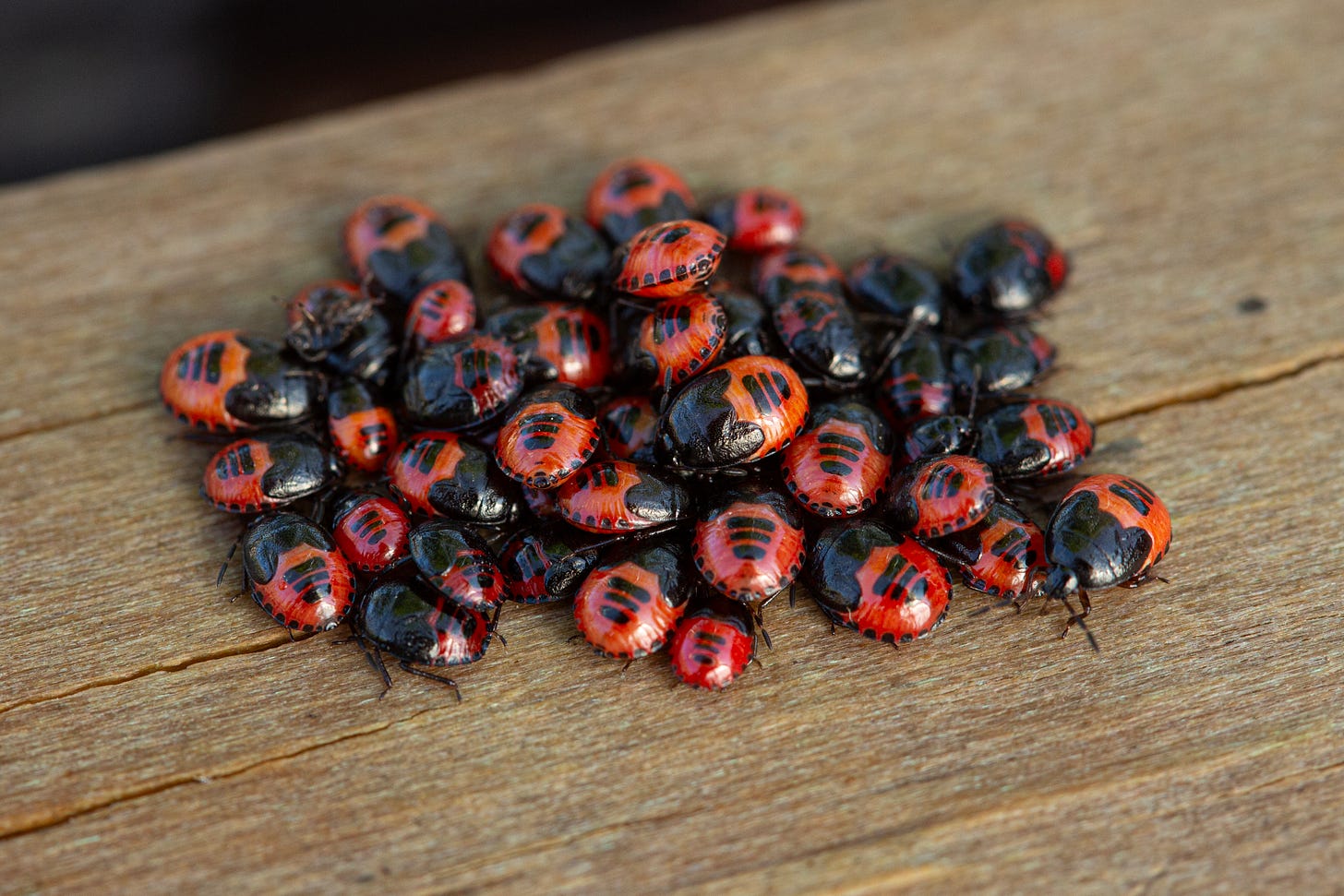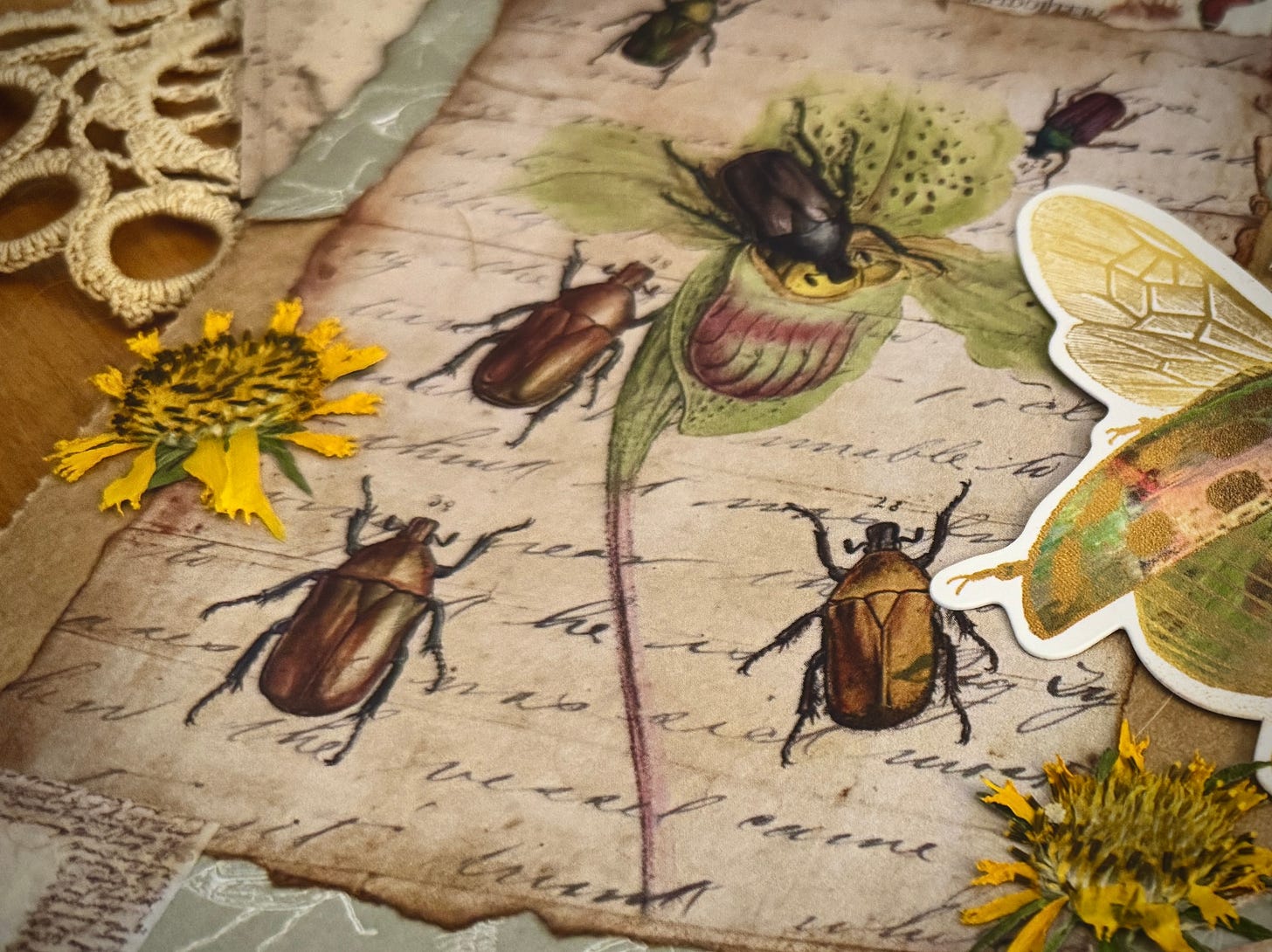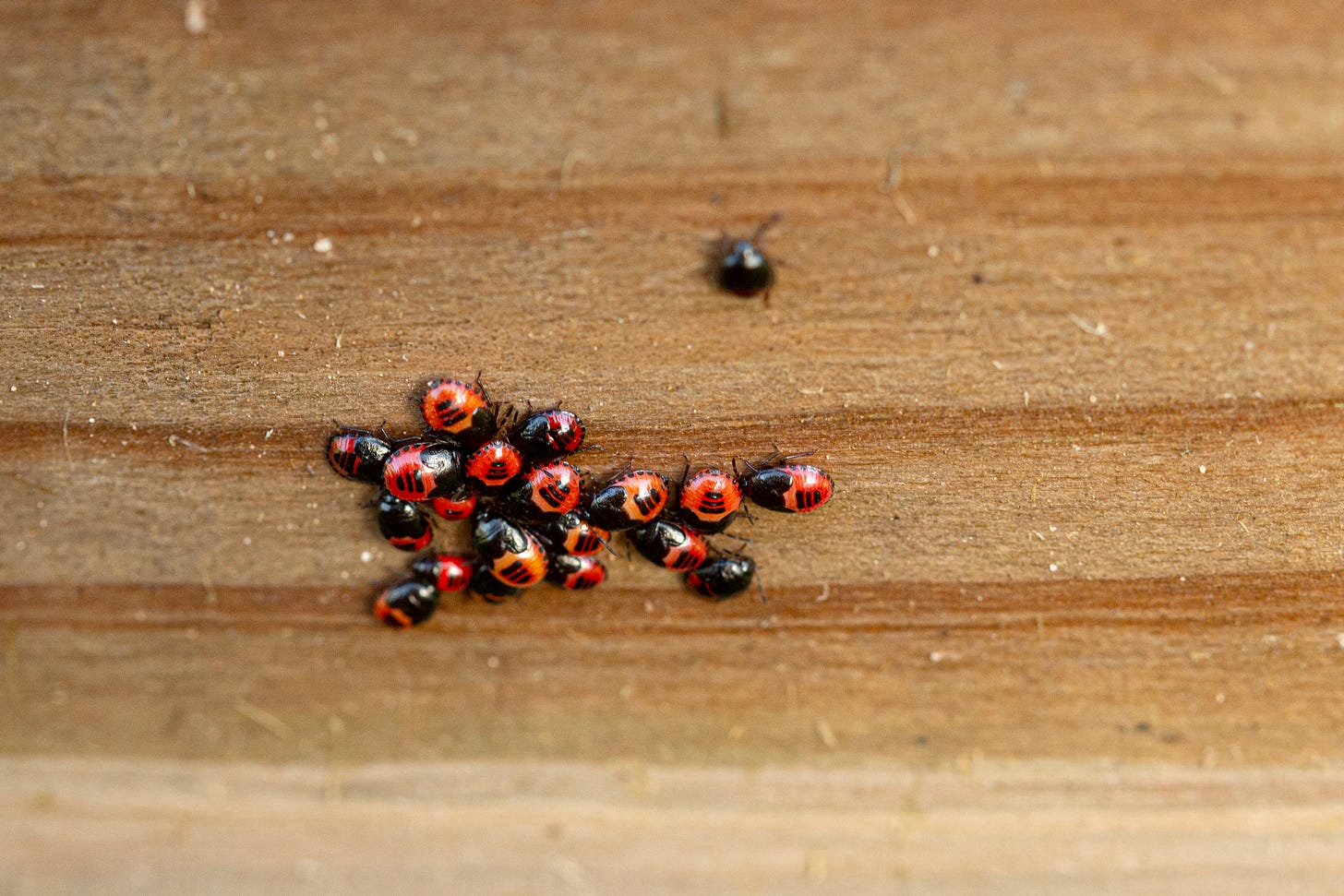The Mother Bug and the Magic of Staying Curious
Even in familiar surroundings, close observation of nature’s tiny details reveals incredible things happening right under our noses.
For the past couple of weeks, I’ve been sharing lessons nature taught me in 2024, inspired by a recent podcast episode of The joe gardener® Show that I had the pleasure of co-hosting. This week, I’m excited to share my third story—a fascinating discovery in the garden earlier this year. I hope you enjoy it!
You know, one thing tending a garden continues to remind me of is that no matter how much you think you know, there’s always more to learn. This year, I encountered an insect I had never seen before in 13 years of having a garden and many more years of spending time in nature, and it completely captivated me.
It was the white-margined burrower bug, sometimes called the "Mother Bug." I had no idea it existed until I went out one morning and from afar noticed clusters of nymphs all over my raised beds, the nearby ground, and even on my grow bags. They were everywhere! At first, as I got closer, I thought they were lady beetles or ladybugs as they are often called. The shape was right and they were orange and black. But it wasn’t until I got closer that I noticed they had black lines on them and not spots like a ladybug.
Not only that, they were also clustered together in broods, and I had never seen ladybugs exhibit that behavior in the garden. I never miss a chance to research and learn about an insect in the garden that I have never seen before, so I was excited to find something new to me.
When I discover a new plant, insect, or animal for the first time, I start by snapping a few photos and/or videos with my iPhone. Then if the subject has not flown, hopped, scurried, or slithered away, I’ll go grab my Canon and my macro lens. I’ll take as many photos from as my angles as possible and upload them to my iNaturalist observations for identification. Then the research begins!
With some specimens I’ll identify it, read about it a bit online, consult one of my books like Insects of North America or Wildflowers of North America, be satisfied, curiosity satiated, and then move on.
With others, I’ll be so sparked by fascination and awe that I might go down a rabbit hole with the path typically paved by a specific book, podcast episodes with some expert biologist or botanist, videos, webinars, blog articles, or whatever else I can find. If the insect or plant has some kind of folk lore trailing in its wake, even better! Then I dive into that and may not come up for air for days.
Many times, I will even need to take it a step further and create some kind of art around it. That might be in the form of a collage for a nature journal, or it could be an embroidery piece that captures the image of the specimen, or I may try drawing or painting it. If it’s a plant, I’ll press it in one of my flower presses. If it’s something that’s no longer living I’ll add it to one of my nature alters. Then I may write about it here or on my website and share some of the photos that I captured.

The day that I discovered the Mother Bug, I was instantly curious and knew I had to learn more. What I found out is that it’s because of their unusual brooding behavior and maternal care that they are called mother bugs. The mother lays her eggs and then stays to guard them, which is already unique compared to what I had seen insects do in the past. But it gets better—once the nymphs hatch, she actually goes out and brings backs seeds for them to feed on!
This is a behavior I have observed in bunnies and birds of course, but couldn’t recall seeing that with insects. I’m sure there are lots of others that do this but I am accustomed to finding insect eggs or nymphs that have just hatched and then fend for themselves.
Honestly, it was amazing. There were clusters of nymphs everywhere, and at first, I had no idea what I was looking at. The way they stayed in clusters dotted all around the garden was especially beautiful and interesting to me. It was like a bug football huddle.
Next, I did what any gardener might do. I wondered if they were going to be devouring any of the crops I had worked so hard to grow, so I kept studying.
I learned that they’re usually associated with plants in the nettle and mint families, but they aren’t considered pests. I had some mint to spare and didn’t mind if they wanted to partake. But I found out that they don’t cause significant harm to crops or people, so they fall into that "neutral bug" category, not really causing any plant or soil disease or damage but not really adding a specific “gardening benefit.”
Additionally, as a soft-bodied insect, they could serve as food for other garden wildlife such as spiders, reptiles, and other insects like beetles and assassin bugs - all of which my little garden has in spades. That makes it an important part of this little ecosystem I tend to.
Learning about their life cycle and maternal care reminded me how much is happening right under our noses that we don’t notice unless we take the time to observe.
These kinds of discoveries in the garden never fail to drive home the idea that there’s always more to learn, no matter how well we think we know our surroundings. Staying curious and observant keeps life fascinating and full of wonder. And being open to new experiences—whether it’s an insect you’ve never seen or something completely different—can surprise you in the best ways.
It’s one of the things I love most about being out in the garden. There’s always a new discovery waiting to be made, and it keeps me connected to the natural world in such a meaningful way.






